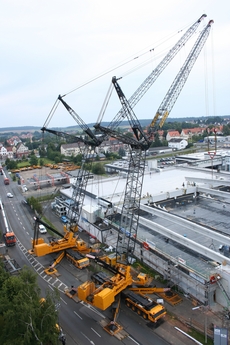Bracht speaks
8 March 2007Dirk Bracht, managing director of Franz Bracht, talks about high demand and low supply in Germany
Franz Bracht has 150 truck and mobile cranes, ranging from 7t to 1,250t capacity, and employs 330 people in ten depots in Germany, including Hofmann, a subsidiary business for crane and work platform rental

Cranes Today: How is business?
Dirk Bracht: Business development in 2006 has turned out very satisfactorily, particularly in so far as the utilisation of our equipment is concerned. For 2007 we hope to achieve the same results as in 2006.
CT: What sort of problems are you dealing with?
DB: At the moment our main problem is the low price level of the hourly rental rates, so that good business results can only be achieved by optimal utilisation rates. The current market situation would be favourable for a joint price alignment of all crane rental companies, but it does not seem as if this will be carried out.
Other problems in Germany are the licensing requirements and orders of the German authorities concerning driving permits for our cranes. Their method of working can be improved, so that the daily scheduling of our cranes will be easier.
In Germany there is also a shortage of skilled crane operators and personnel. Therefore, our crane and truck drivers are educated and trained regularly in our company by qualified trainers and we offer apprentice training positions. When we employ a crane operator, we always prefer applicants who have long experience in driving trucks and who have already worked as mechanics.

An interesting trend in our source of business is the market launch of the new 1,000t telescopic cranes. Some of these cranes already have been ordered and it remains to be seen how they will be incorporated in the market and on which level the daily rental rate will be settled down in view of such a major investment.
At present we are facing big problems concerning the delivery times for cranes from the manufacturers. Currently cranes of standard size are not available before the end of 2008 or the beginning of 2009. Furthermore, there is still a lack of crane tyres. Finally, in consideration of the high price of fuel an increase of the hourly rental rates for cranes is inevitable.